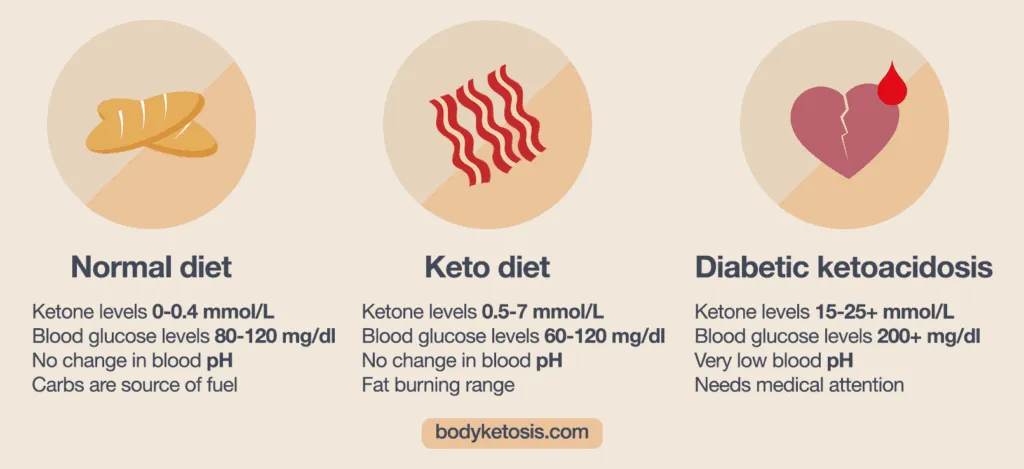From Carbs to Ketosis: A Step-by-Step Guide to Getting Started
Introduction
The ketogenic diet has gained popularity in recent years as a way to promote weight loss and improve overall health. This low-carb, high-fat diet has been shown to help individuals achieve ketosis, a metabolic state in which the body burns fat for fuel instead of carbohydrates. Transitioning from a diet high in carbohydrates to a ketogenic diet can be challenging, but with the right knowledge and preparation, it can be done successfully. In this article, we will provide a step-by-step guide to getting started on a ketogenic diet, as well as address common questions and concerns that individuals may have.
Step 1: Understanding the ketogenic diet
Before embarking on a ketogenic diet, it is important to understand the basic principles behind it. The ketogenic diet involves drastically reducing your intake of carbohydrates and increasing your consumption of fats. By doing so, you force your body to enter a state of ketosis, in which it begins to burn fat for fuel instead of carbs. This can lead to weight loss, improved energy levels, and other health benefits.
Step 2: Calculating Your Macros
In order to achieve ketosis, it is important to calculate your macronutrient intake. This involves determining the amount of carbohydrates, fats, and proteins you should be consuming each day. A typical ketogenic diet consists of 70-75% fat, 20-25% protein, and 5-10% carbs. There are online calculators available that can help you determine your specific macronutrient needs based on your age, weight, and activity level.
Step 3: Planning Your Meals
Once you have calculated your macros, it is time to plan your meals. A typical ketogenic diet includes foods such as meat, fish, eggs, cheese, nuts, seeds, and low-carb vegetables. It is important to focus on whole, unprocessed foods and avoid processed and sugary foods. Meal planning can help you stay on track and ensure that you are getting the right balance of nutrients.
Step 4: Transitioning to Ketosis
Transitioning to ketosis can be challenging, as your body may experience withdrawal symptoms from cutting out carbs. These symptoms, often referred to as the “keto flu,” can include fatigue, headaches, and irritability. It is important to stay hydrated, get plenty of rest, and consume electrolytes to help alleviate these symptoms. It may take a few days to a week for your body to fully adjust to ketosis, so be patient with yourself during this time.
Step 5: Monitoring Your Progress
Once you have successfully transitioned to ketosis, it is important to monitor your progress. This can involve tracking your weight, body measurements, and energy levels. Keeping a food diary can also help you stay accountable and ensure that you are staying within your macronutrient goals. It is important to listen to your body and make adjustments as needed to ensure that you are getting the best results from your ketogenic diet.
Frequently Asked Questions
Q: Can I eat fruit on a ketogenic diet?
A: While fruit is generally high in carbohydrates, there are some fruits that can be consumed in moderation on a ketogenic diet. Berries such as strawberries, blueberries, and raspberries are lower in carbs and can be included in small amounts.
Q: Will I lose muscle mass on a ketogenic diet?
A: While some initial weight loss on a ketogenic diet may come from muscle mass, it is important to consume enough protein to preserve muscle mass. Strength training exercises can also help maintain muscle mass while on a ketogenic diet.
Q: How long does it take to enter ketosis?
A: The time it takes to enter ketosis can vary from person to person, but it typically takes 2-7 days of following a strict ketogenic diet to enter ketosis. Consuming fewer carbohydrates and increasing your fat intake can help speed up the process.
Q: Is a ketogenic diet safe for everyone?
A: While a ketogenic diet can be beneficial for many individuals, it may not be suitable for everyone. It is important to consult with a healthcare professional before starting a ketogenic diet, especially if you have any underlying health conditions or are pregnant or breastfeeding.
Q: What are some common side effects of a ketogenic diet?
A: Some common side effects of a ketogenic diet include fatigue, headaches, constipation, and bad breath. These side effects are often temporary and can be alleviated by staying hydrated, consuming electrolytes, and getting plenty of rest.
Conclusion
Transitioning from a diet high in carbohydrates to a ketogenic diet can be challenging, but with the right knowledge and preparation, it can be done successfully. By understanding the principles of the ketogenic diet, calculating your macros, planning your meals, transitioning to ketosis, and monitoring your progress, you can achieve your health and weight loss goals. Remember to listen to your body, make adjustments as needed, and consult with a healthcare professional if you have any concerns. With dedication and perseverance, you can successfully transition from carbs to ketosis and reap the benefits of a ketogenic lifestyle.


